SLEEPWALKERS (1992)
A mother-and-son team of strange supernatural creatures move to a small town to seek out a young virgin to feed on.
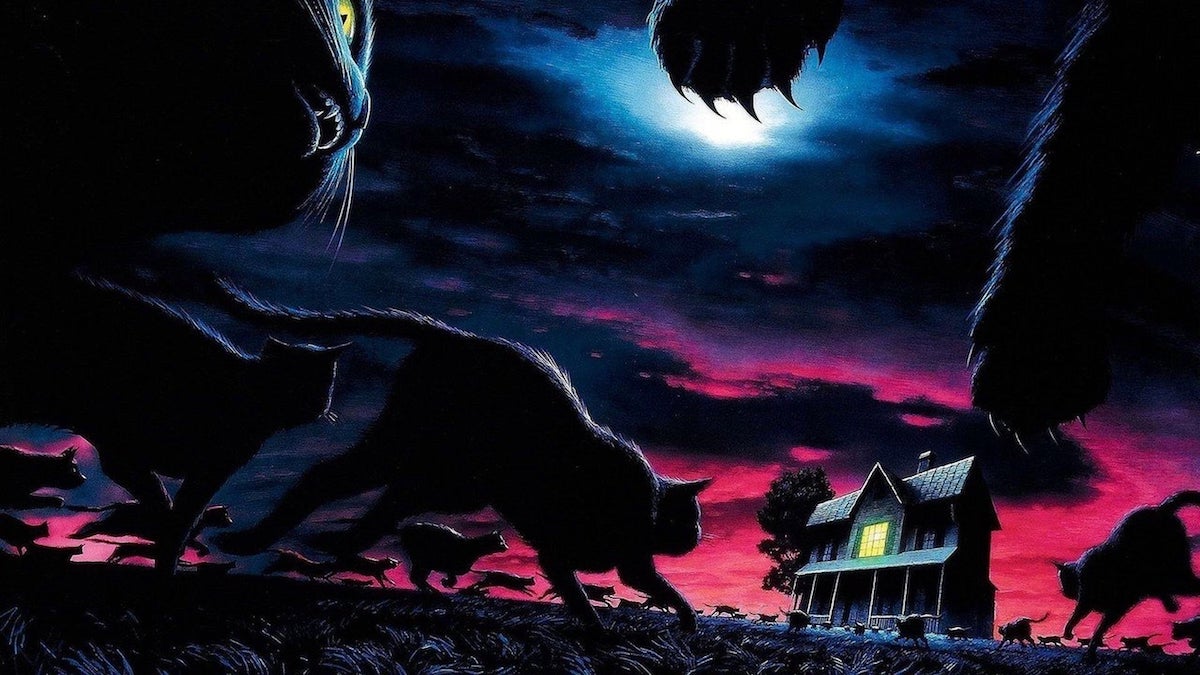
A mother-and-son team of strange supernatural creatures move to a small town to seek out a young virgin to feed on.

One of the world’s most prolific authors, Stephen King’s had a multitude of best-sellers since 1965. During the 1970s and 1980s, King carved a path for himself as the foremost writer of horror fiction. His novels range from tales rooted in reality, to ones with paranormal undertones, to full-blown supernatural adventures. The Master Of Horror has now written over 60 novels and 200 short stories, selling over 350 million books worldwide.
It wasn’t until 1973, when King sold his first novel Carrie (the tale of a tormented girl who seeks telekinetic revenge on her peers), that it became a huge success once published in 1976. It was adapted for the big screen by Brian De Palma the same year, with Sissy Spacek as the eponymous school girl. Since Carrie’s original success, King’s literary work has now begat over 20 television shows and more than 40 films. While we’ve been treated to plenty of critical darlings—The Shining (1980), The Dead Zone (1983), Misery (1990)—there have also been plenty of disasters, like The Lawnmower Man (1992), Dreamcatcher (2003), and The Dark Tower (2017).
During the late-’80s, King had also become a seasoned screenwriter, adapting his own books for projects such as Creepshow (1982), Cat’s Eyes (1985), and Pet Sematary (1989). Although he’d written some new material for segments of Creepshow and Cat’s Eyes, the author had never penned a script exclusively for the cinema. That changes in 1992 when he wrote his first feature-length horror movie, Sleepwalkers. Following the success of Christine (1983) and Stand By Me (1986), Columbia Pictures backed his venture with a budget of $15Ml. But while Rupert Wainwright (The Fog) was originally hired to make Sleepwalkers, King had final approval and asked that Mick Garris direct after enjoying Psycho IV: The Beginning (1990).
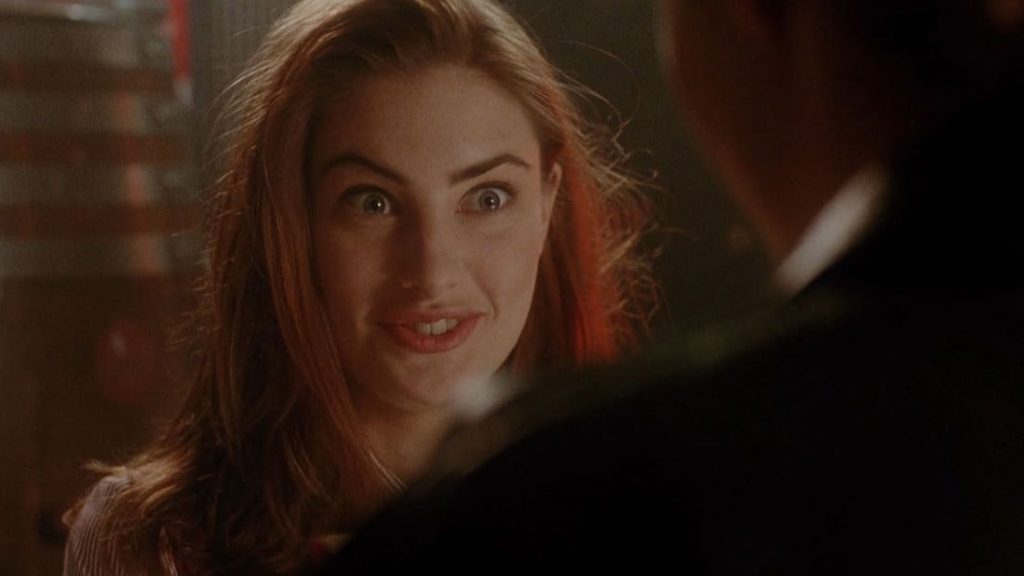
Following their collaboration on Sleepwalkers, King and Garris developed a fruitful relationship and later worked together on several adaptations of the author’s novels. Garris would go on to direct the TV miniseries versions of The Stand (1994) and The Shining (1997). Similar to Frank Darabont (The Shawshank Redemption) and Mike Flanagan (Doctor Sleep), Garris’s career has been somewhat defined by his relationship with the author’s material since Sleepwalkers. In addition to adapting TV projects originated by King, Garris also directed the author’s writing for the screen on several other occasions: Quicksilver Highway (1997), Riding the Bullet (2004), and Bag of Bones (2011).
When Charles (Brian Krause) and his mother, Mary (Alice Krige), settle into a small Indiana town, the local residents don’t suspect they’re ‘Sleepwalkers’; feline vampires that can alter their appearance and feed on innocent women. After meeting chaste Tanya (Mädchen Amick) at a local cinema, Charles becomes enamoured with her when he starts the same high school. Upon discovering Tanya’s a suitable match to meet his mother’s needs, Charles invites her out on a date. However, when Tanya arrives, she learns his true intentions the hard way…
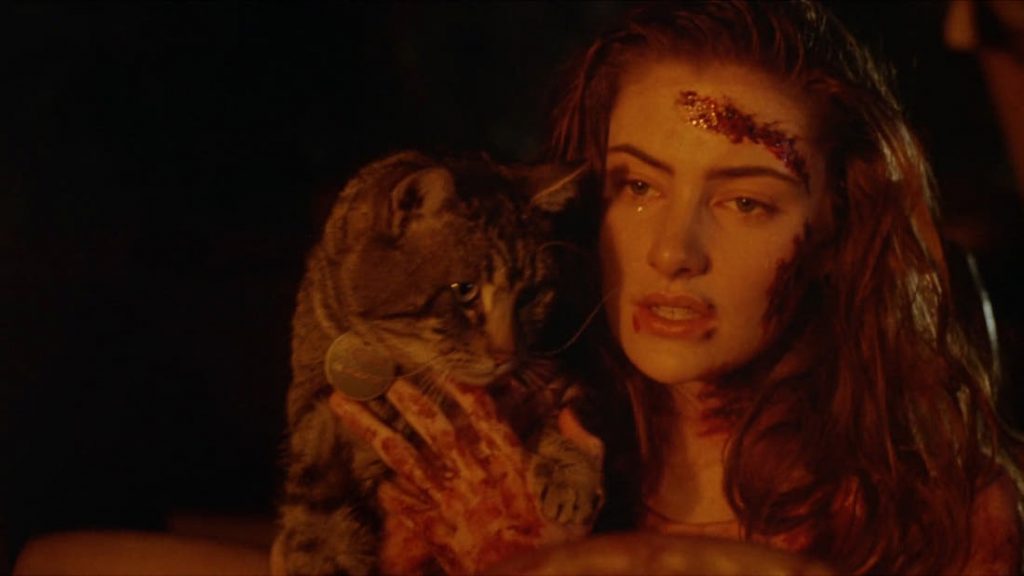
All the cast deliver a colourful performance associated with King’s characters. Klause (Charmed) drips in a golden-boy appeal that make his character incredibly likeable. As the story progresses and his villainous intentions become clear, he’s just so gleefully evil. Charles doesn’t come to life until Krause is asked to be totally unhinged and spit out hammy one-liners.
Opposite him is the beautiful Mädchen Amick (Twin Peaks), as the doe-eyed Tanya; she’s also immediately likeable as we first seen her dancing to The Contours’ “Do You Love Me”. Tanya’s the stereotypical girl-next-door mixed with the ultimate incarnation of female empowerment. She’s sweet and charming in a way it makes one question how she never became a megastar following Twin Peaks (1990-91).
Mary’s brought to life with the devious spark of Alice Krige, who sensually imbues her character with allure and malevolence similar to her performance in Ghost Story (1981).
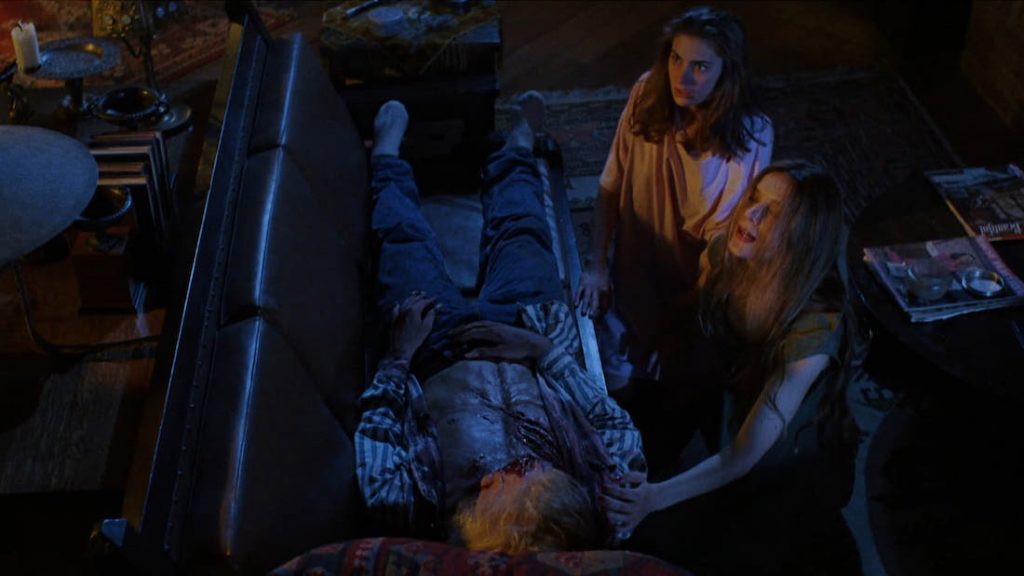
King had just published one of his biggest hits with Pet Sematary three years prior to Sleepwalkers, which makes the overall tone quite unconventional. While Pet Sematary was a dark and brooding horror flick, Sleepwalkers is the opposite. The screenplay is a disjointed mix of horror and humour. It opens with a haunting sequence in which two cops are investigating Charles and Mary’s previous nest, with the exterior of the house festooned with corpses of cats, and inside they find the body of a young girl drained of life. The somber atmosphere leading to a jump-scare sets up an expectation regarding tone and emotions. However, it’s savagely subverted once the story truly kicks in.
As violence erupts, Sleepwalkers leans into camp gags and one-liners. The turning point being at the Homeland Cemetery in which Charles reveals his true self to Tanya. Following a confrontation, Charles murders a policeman by jamming a pencil into his head. As the officer falls to the floor, the demonic Charles grins and enthuses “cop kebab!” with the demented glass of Jim Carry in The Mask (1994). It’s here where Sleepwalkers abandons whatever pretence it may have had, as its second half is essentially a prolonged climax with the Sleepwalkers terrorising Tanya. An argument could be made that King’s high-energy screenplay attempts to evoke Creepshow (1982). While the pacing isn’t entirely successful, it’s a reminder the Master Of Horror is capable of writing some incredibly peculiar stuff.
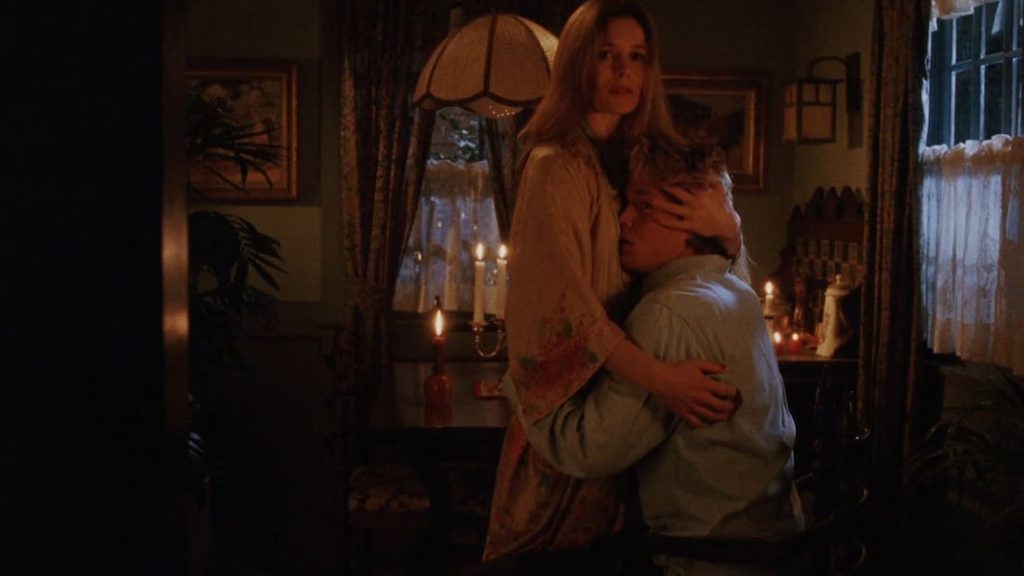
Garris directs Sleepwalkers with a light touch that helps sell the outlandish concept. As demonstrated in Critters 2: The Main Course (1988), the director reminds us that some of the best movies in the genre are outright fun. Although moments are incredibly frightening and gory, its campy tone ensures it’s an entertaining romp. There’s a death by corn on the cob, death by pencil, and some funny quips. For example, one scene sees Charles’ teacher, Mr Fallows (Glenn Shadix), attempt to sexually blackmail him. After reaching to touch his leg, Charles tears off his hand and jokes “people really should learn to keep their hands to themselves. Here’s yours”, before passing the terrified man his severed hand. Like John Carpenter’s In the Mouth Of Madness (1994) and Tobe Hopper’s The Mangler (1995), Sleepwalkers would sit comfortably next to other outlandish and melodramatic ’90s horrors.
Sleepwalkers is undoubtedly self-aware about what it is and Garris enjoys playing with these elements. To add to the eccentricity, the in-joke cameos pile up as the movie races to the ghoulish finale. Famous directors such as Joe Dante (The Howling), Tobe Hooper (Texas Chain Saw Massacre), and Clive Barker (Hellraiser) all make appearances! Additionally, we’re treated to a cameo from the Master of Horror himself as the redneck cemetery groundskeeper. The highlights have to be Ron Perlman (Hellboy) and the hilarious Dan Martin (Heat), however, with Perlman chewing scenery with as much zeal as possible as a stereotypical alpha male cop. And Martin spends most of the time driving around, singing crude songs with his beloved cat in the passenger seat of his car. Understandably, the frivolous tone may not appeal to King traditionalists expecting to see his usual conventions. However, the colourful aesthetic makes Sleepwalkers an enjoyably brief 90-minutes.
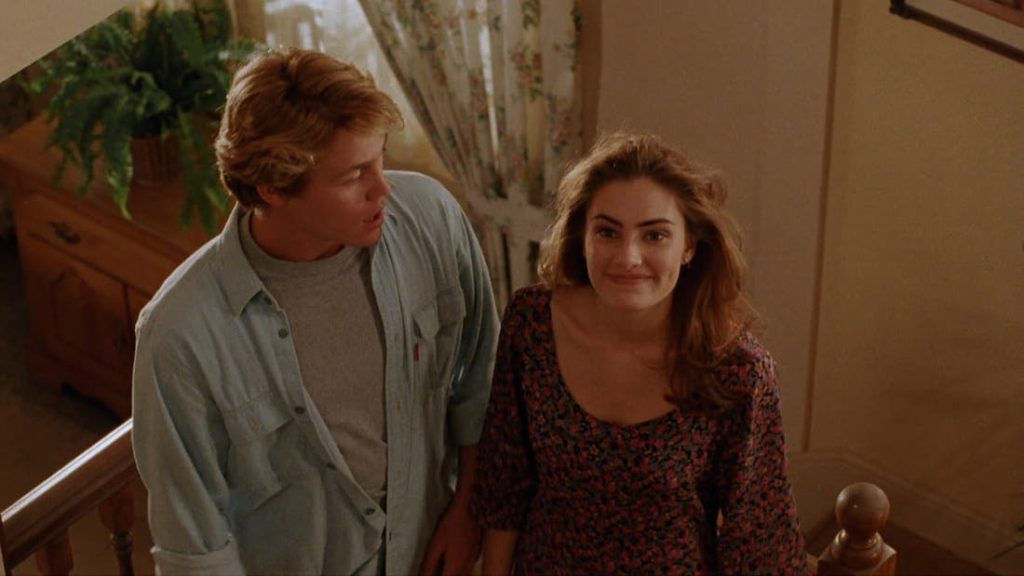
Underneath its schlocky horror exterior, there are some interesting concepts that keep Sleepwalkers memorable. King attempts to challenge the misguided perception that women can only function as helpless victims in horror. Following in the footsteps of Laurie in Halloween (1978) and Nancy in A Nightmare on Elm Street (1984), Tanya becomes the latest female protagonist in the genre. After discovering the Sleepwalkers, she’s forced into a conflict without the help of her parents and the local police department. Arriving in tandem with Buffy the Vampire Slayer (1992) and Scream (1996), whose two protagonists would eventually redefine the horror genre. It could be argued Sleepwalkers was a stepping stone in challenging gender roles. King would continue challenging these themes in his later work; most notably in the novel Gerald’s Game, released several months after Sleepwalkers.
Unfortunately, King’s preoccupation with provocation undercuts and diminishes the story. The choice to stimulate the audience with cheap thrills prevents the characters from gaining any depth. It’s established at the beginning, the Sleepwalkers themselves have a storied history filled with personal tragedy and persecution. Presented in a brief title card, we’re given a short description regarding the origins of Sleepwalkers and it’s similar to the characters in King’s later Doctor Sleep (2019)—they’re supernatural nomads that require a life-force from innocent women to survive. However, excluding the Oxford Dictionary definition, their backstory is never explored to help develop the characters. Instead, the script focuses on a bizarre romantic paternal subplot. It’s commendable that King attempts to subvert horror tropes such as the mother-son dynamic, but their incestuous relationship leaves a bitter taste and makes many scenes too uncomfortable.
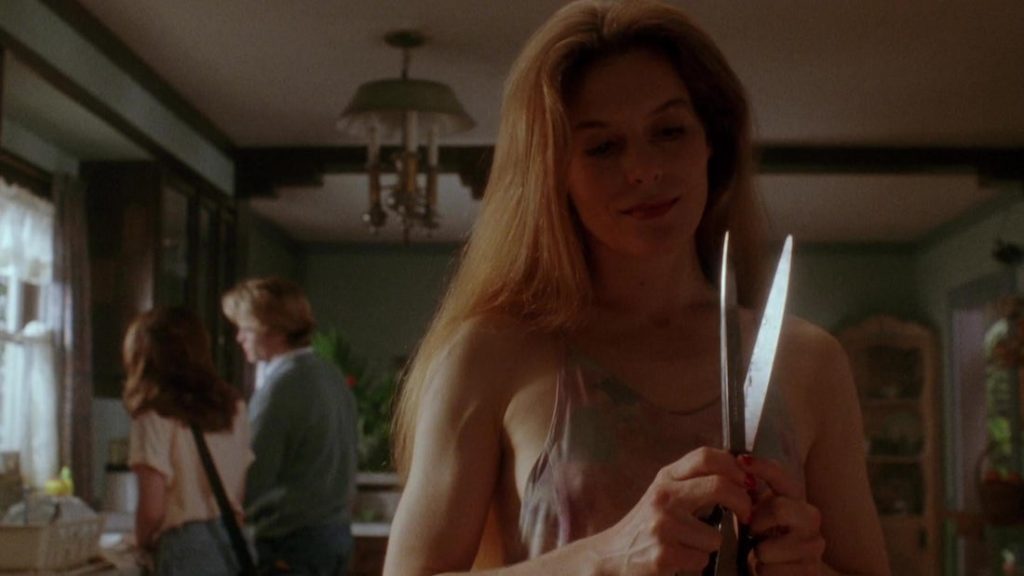
What Sleepwalkers lacks in narrative complexity and richly developed characters, it makes up for it with an unhinged willingness to gross-out and entertain. Using the same method as the Michael Jackson’s “Black and White” video, Sleepwalkers features some revolutionary VFX for its time. Along with Terminator 2: Judgment Day (1992), Sleepwalkers was one of the first movies to feature CGI ‘morphing’ effects. However, unlike James Cameron’s masterpiece, Charle’s transformation from human to Sleepwalker hasn’t stood the test of time! Nonetheless, Tony Gardner creates some excellent SFX, serving as a throwback to when gore was handled with some realism. Severed hands and fingers result in excessive bloodshed, and the corkscrew in Charles’ eye-socket is deliciously gruesome. Genre fans will notice the early transformations of the Sleepwalkers strongly resemble the vampire makeup in later TV shows Buffy the Vampire Slayer (1997-2003) and Angel (1999-2004) too. The early ’90s wasn’t the golden age of VFX in horror and, while the CGI now looks terribly dated, the practical effects of Sleepwalkers may be the peak of practicality.
Despite grossing $30M at the box office, Sleepwalkers wasn’t a critical success. Is it the best Stephen King movie? Certainly not, but it’s a deliciously gruesome popcorn flick that’s found a cult following. Those expecting something on par with The Shining or The Dead Zone will be disappointed, however, as Sleepwalkers is more a glorious pulpy B Movie along the lines of Creepshow. The outlandish plot and perverted storylines leave a bad taste, but Mick Garris has fun with the material and cranks up the gore and gags to create a memorable dark comedy.
USA | 1992 | 91 MINUTES | 1.85:1 | COLOUR | ENGLISH

For the first time in the UK, Sleepwalkers is presented on HD Blu-ray in the original aspect ratios of 1:85:1. While it’s not hailed as being either a restoration or remastering, one can only assume it’s the same transfer as the 2012 US release. Nonetheless, as one would expect from Eureka Entertainment, the presentation is excellent. An incredible amount of detail can be found during close-ups, where facial textures are easily discernible and each whisker of Clovis is noticeable. Colours are well saturated, especially during daytime scenes. Rodney Charters’ cinematography looks gorgeous as it’s baked in the warm glows of summer and Californian countryside. Blacks are deep and stable, with a healthy amount of grain creating a cinematic presentation.
The disc presents two audio options for viewing the movie: DTS-HD 5.1 Master Audio and LPCM 2.0. Both tracks are strong and boast crisp and clear dialogue exchanges, never distorting during the chaotic moments. Although the audio remains front-heavy for the majority, it’s effectively spread out to the exterior channels with music and atmospherics. An early scene featuring The Contours’ “Do You Love” me makes use of the subwoofer, with nice use of bass. Additionally, Nicholas Pike’s score is incredibly immersive, opening the entire soundstage with deep synth and dominant strings. Whereas the atmospherics such as the cats make use of the rear channels, broadening the image. Various SFX are crisp, capturing snapped limbs and gunshots clearly. While purists will be glad to have the original mix on the 2.0 track as an option, there’s not much difference between the two audio tracks.

director: Mick Garris.
writer: Stephen King.
starring: Brian Krause, Mädchen Amick, Alice Krige, Lyman Ward, Cindy Pickett, Ron Perlman, Jim Haynie, Dan Martin, Lucy Boryer, Glenn Shadix, Stephen King, John Landis, Joe Dante, Clive Barker & Tobe Hooper.
